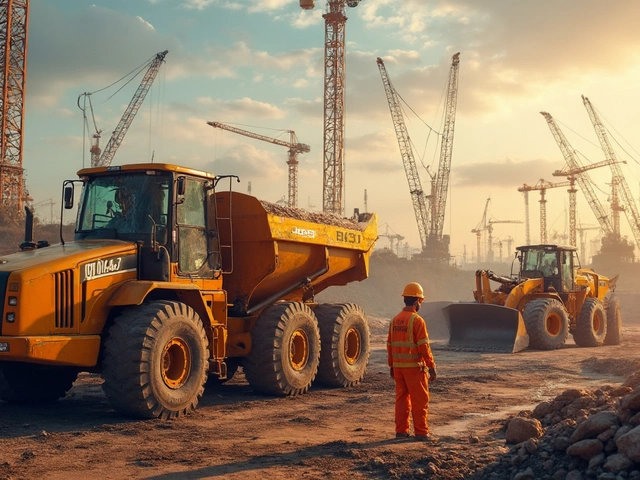Electricity runs the world, and knowing what voltage you’re dealing with is more important than ever, especially in a country like India. So, are we talking 110V or 220V here? Most appliances in India operate on 220 volts. But why 220? And what does this mean for anyone involved in the world of electronics manufacturing?
The idea of 220V isn’t just some arbitrary number. It actually has a lot to do with efficiency and infrastructure costs. Stick around, and you'll find out how this choice impacts everything from designing gadgets to simply plugging in your charger as a tourist.
If you're planning to manufacture electronics for the Indian market or just visit the country, this voltage standard is something you can’t ignore. Because let's face it, no one wants their hairdryer exploding on a trip or an entire batch of electronics malfunctioning because of a voltage mismatch.
But hey, this isn't just about not frying your devices. Understanding how India got to this standard can give you a glimpse into the country’s fascinating history and emerging tech trends. So whether you're an engineer, a traveler, or someone intrigued by electrical systems, keep reading to stay plugged in. Literally.
- India's Voltage: 110V or 220V?
- Why the 220V Standard?
- Impact on Electronics Manufacturing
- Tips for Travelers and Locals
- Future Trends in Voltage and Electronics
India's Voltage: 110V or 220V?
So, what's the scoop on India's voltage standards? It’s all about the 220V standard we use here. Unlike countries like the United States or Japan, which stick with 110V, India (and actually, most of the world) operates on 220 volts. Seems like a small difference, but it dictates a lot, from power efficiency to appliance compatibility.
The reason India uses 220V goes back to the early days of electrical infrastructure. European countries originally set the bar high at 220-240V, primarily because higher voltage is more efficient for long-distance transmission. Less copper wiring is needed, which means lower infrastructure costs, a big win for a developing nation!
But not all is smooth sailing. There are challenges too. Higher voltage means there's a greater risk of electric shock and overheating if devices aren’t built to handle it. So, when you’re buying gadgets or manufacturing electronics tailored for India, make sure they are equipped for the 220V environment. Most imported electronics, especially those from America, might need a converter or transformer.
For us everyday folks, keeping an eye out for voltage ratings on devices and chargers is key. If you're an international traveler, bringing a universal adapter is a smart move. It’s little things like these that let you navigate the Indian electronics scene without a hitch.
Why the 220V Standard?
Ever wondered why India chose the 220V system instead of sticking with something else like 110V? Well, it all boils down to efficiency and cost savings. The higher voltage of 220V allows for more efficient power transmission. Here's the deal: when electricity travels through wires, some of it is lost as heat. With higher voltage, less current is needed to deliver the same amount of power, meaning you get less loss and more bang for your buck.
India’s choice for 220V isn't just about being efficient; it’s also about fitting into the global tech scene. Most of the world uses a similar voltage, which makes it simpler for manufacturers to develop electronics that can work internationally. Imagine having to design gadgets for different voltages every time—total hassle, right?
Another cool thing about sticking with 220V is safety and infrastructure costs. Believe it or not, higher voltage means cables don’t need to be as thick to carry the electricity. This not only saves on materials but also reduces installation costs. Win-win!
But hey, don't just take my word for it. Check out this simple comparison table:
| Voltage | Region | Benefit |
|---|---|---|
| 110V | USA, Canada | Lower risk of shock |
| 220V | India, Europe | More efficient power delivery, reduced costs |
So, when you see a gadget rocking the 220V power system in India, know there's a solid reason behind it. It’s all about making tech work smarter, not harder.

Impact on Electronics Manufacturing
So, what does the 220V standard really mean for electronics manufacturing in India? Well, quite a bit, actually. If you're thinking about making electrical devices for the Indian market, getting this right is crucial. Manufacturing for a 220V system throws in some unique challenges and opportunities.
First off, let's talk costs. Designing products to function on a higher voltage like 220V can actually be more cost-effective in terms of wiring and energy transmission. In an industrial setting, less current is needed, which can mean cheaper materials for wiring—pretty handy when you’re talking about mass production, right?
But don't break out the party hats just yet. Manufacturers also have to ensure their products can handle daily fluctuations in voltage. Unlike the Western 110V grids, where spikes and drops are less common, India's 220V system might experience these due to infrastructure differences. This means integrating components that can withstand such changes without blowing a fuse—literally and figuratively.
Another biggie is compliance with local regulations. Indian standards such as the IS 302-1 for appliance safety and IS 12360 for voltage tolerance levels must be adhered to. These ensure products are safe and reliable, which is non-negotiable for customers.
- Adapting designs to 220V improves efficiency and lowers transmission costs.
- Being ready for voltage fluctuations can prevent appliance failures.
- Understanding local regulations is key to compliance and product safety.
Manufacturers also have to think about global markets if they want to export. Devices initially made for India’s 220V might need modifications to work elsewhere, adding another layer of complexity. Balancing between making products versatile enough for global standards yet optimized for the local grid is quite the tightrope walk.
So, whether you’re a seasoned techie or new to the game, navigating these waters requires smart design and planning. But hey, where there's a challenge, there's also the chance to innovate. And that's where the magic happens in electronics manufacturing.
Tips for Travelers and Locals
If you're planning a trip to India or living there, understanding the India voltage situation isn't just handy—it's crucial. First off, most of the country runs on 220V, so checking your devices' voltage compatibility can save you from a mini disaster.
For all you travelers out there, make sure to pack a universal adapter. Indian plugs come in two types: C and D, which might be different from your home country's standards. The last thing you want is to hunt down an adapter in the middle of an exciting trip.
Now, if you're a local or planning a long-term stay, it’s wise to invest in a good surge protector. Power surges aren't uncommon, and a good surge protector can mean the difference between a working laptop and sudden heartache. And hey, it’ll keep your gadgets safe from fluctuating voltages.
Here's a tip for both travelers and locals. Before buying an imported electronic device, check if it's dual voltage. Devices configured only for 110V won’t work with India's 220V system. It’s not just about the plug—it's also about the juice!
If you're driving, electric vehicle (EV) owners in India need to be aware of the charging standards. Check if public charging stations support your vehicle's plug type. With the rapidly growing EV infrastructure, staying informed can make your travel a lot smoother.
Whether you're hopping across borders or just buying a new kitchen appliance, understanding the electrical landscape can save you loads of headache. Trust me; it's a simple step that can go a long way in ensuring everything runs just fine.

Future Trends in Voltage and Electronics
As the world gets more tech-savvy, India’s electronics manufacturing landscape is on the brink of some serious shake-ups. The standard 220V system isn’t going anywhere just yet, but let's explore what's on the horizon and how that might impact the industry.
First off, there’s increasing chatter about smart grids. These clever systems could change how we consume energy, making it more efficient and responsive to real-time demands. You can think of smart grids as the future of electricity, helping everything from reducing blackouts to smoothly handling the influx of renewable energy sources.
Speaking of renewables, solar energy is picking up speed. We're talking solar panels being integrated with residential and commercial structures like never before. With solar tech evolving, devices might eventually adapt to work directly with solar-generated currents, further enhancing energy efficiency and reducing dependency on traditional 220V power lines.
Now, if you're in electronics manufacturing, especially in India, designing products that are compatible with various voltage systems is becoming crucial. Manufacturers aiming for global reach might consider creating gadgets that can easily switch between 110V and 220V.
Also, internet of things (IoT) devices are flooding the market, and they’re all about connectivity. These devices often run on low power and could drastically change how everyday electronics are designed and manufactured. With more power-efficient devices, the demand on traditional voltage systems may decrease, leading to innovations in how electronics are powered and utilized.
In conclusion, while the core 220V standard remains strong, the ways we use and interact with it are evolving. Smart grids, solar power, adaptable products, and IoT devices are set to keep electronics manufacturers on their toes, offering fresh challenges and opportunities alike.






